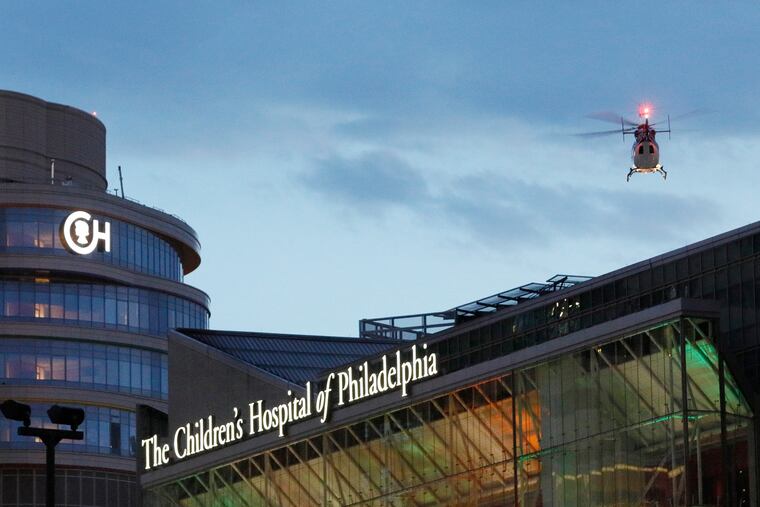For children’s hospitals, a viral season like no other
With improved public awareness, we can keep more children healthy.

It was 7:30 in the morning on Sept. 27, 23 hours into a 24-hour shift in the neonatal intensive care unit (NICU) at the Children’s Hospital of Philadelphia, when I got a call from my wife, who was concerned about our 18-month-old son. Exhausted from a sleepless night, I listened as she explained that he was struggling to breathe. He was wheezing, breathing fast, and looked tired. I told her to bring him to the emergency department right away. By the time I got there, he was wearing a face mask connected to a CPAP machine to help him breathe. He was admitted to the intensive care unit later that day.
As a physician who works in the NICU, I am no stranger to ventilators, but it was shocking to experience it firsthand. Our son was eventually diagnosed with bronchiolitis, a lower respiratory tract infection unique to young children that can lead to difficulty breathing and respiratory failure. Our son was fortunate to be discharged from the hospital after a short stay. What I did not know, however, was that he was part of the beginning of a surge in viral respiratory infections in children this fall.
The most common cause of bronchiolitis is the respiratory syncytial virus, or RSV. Unlike COVID-19, RSV is not new to us. We have known about it as a major cause of respiratory illness in children since the 1950s. Every year in the winter months, there are cyclical RSV outbreaks that send infants and toddlers to the emergency department, which children’s hospitals have historically been able to handle.
Many predicted that respiratory viruses in children would come back in a big way with the relaxing of pandemic restrictions. What remained unclear until now was the magnitude of the comeback.
Here in Philadelphia, the number of children hospitalized with respiratory failure due to RSV is more than double any previous year going back more than a decade. The number of children testing positive for RSV in our community is quadruple what it is in a typical RSV season. The sheer volume of illness has stretched many hospitals to capacity.
In our NICU, we are seeing babies admitted daily who are struggling to breathe and need critical care. Hospitals are full, the emergency department wait times are long, staff are stretched thin, and we are having a hard time seeing all of the children and families who come seeking care. If this were not enough, we are just beginning to see influenza spread significantly for the first time since before COVID-19. For children, this is a viral season like no other.
Why is this happening?
The reasons behind the current surge in pediatric respiratory infections are complex and multifactorial, but one leading theory is that children incurred an immunity debt from the extended period of isolating and physical distancing during the peak of COVID-19.
Most young children experience an upper respiratory tract infection about once a month during the first few years of life, allowing for a slow buildup of protective immunity. This did not happen for children who were young or were born during the pandemic.
Now that COVID-19 mitigation procedures have been relaxed, masks are largely gone, and day cares are back at full capacity, a generation of children 0 to 5 years old who are carrying this immunity debt are getting sick all at once. This also has coincided with a national reduction in the number of pediatric health-care facilities, hampering our ability to care for children who need to be hospitalized.
What can we do now?
After the experience with COVID-19, our country is unlikely to tolerate a return to large-scale lockdowns and the physical distancing required to mitigate the current viral surge. Pediatric hospitals are doing what they can to accommodate this additional capacity as quickly as possible. Beyond this, more creative and targeted approaches are needed.
At the national level, the Biden administration should declare a public health emergency broadly encompassing this viral surge: not just RSV, but other respiratory viruses as well. This would make federal resources available to address the current crisis.
The Food and Drug Administration should accelerate approval of RSV monoclonal antibodies and vaccines. State medical boards should consider temporarily expanding the scope of practice of certain providers and trainees to solve hospital staffing shortages.
Hospital networks can be creative in maximizing the care that can be provided in the outpatient setting to open up more inpatient beds. City governments should work with health-care organizations to establish better testing infrastructure to eliminate costs and enhance access to the community to help diagnose infections and enable isolation at home. Local municipalities should be granted the autonomy to introduce masking policies based on the level of respiratory disease in the community.
Families who are concerned or have questions about their children can talk to their doctors or reference professional resources such as chop.edu/sickseason to help make decisions about whether they can safely treat their kids at home, go to urgent care, or head to the emergency department for evaluation.
Vaccination remains the best way to protect children. While we do not have an RSV vaccine yet, we do have safe and effective vaccines for COVID-19, influenza, and many other viruses that cause serious illnesses in children. Pediatricians can help answer questions about vaccination, which is the most effective strategy to keep kids out of the hospital.
We do not know how long this viral surge in children will last, but with improved public awareness and a few targeted strategies, together we can keep as many children healthy and at home as possible.
Jonathan Knowlton is a neonatal fellow at Children’s Hospital of Philadelphia.